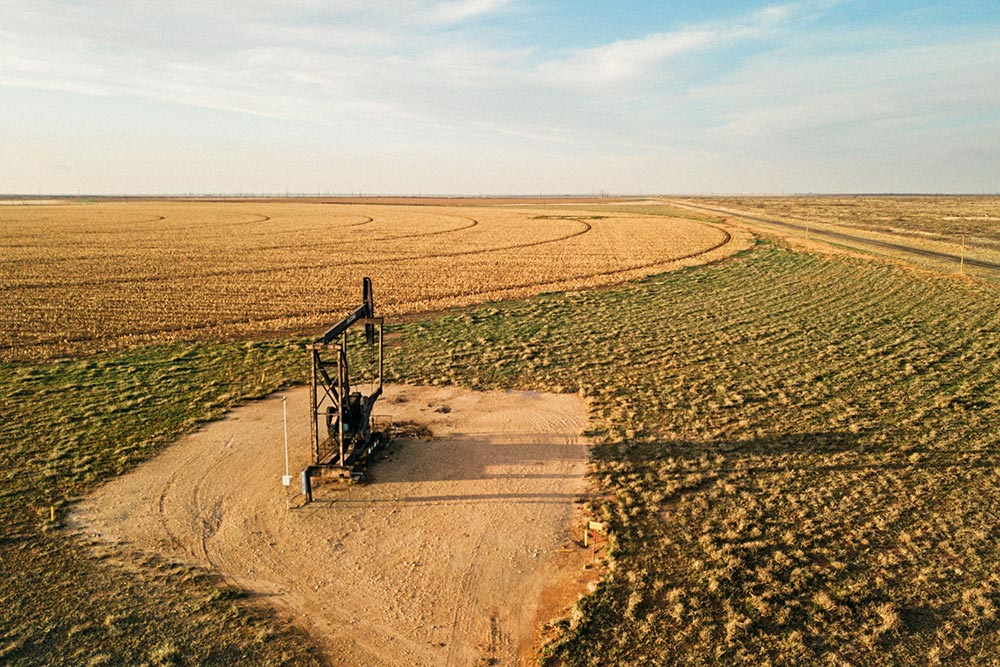
占地30多平方公里、滿是沙塵的West Seminole油田位于得州西部偏遠地區的邊緣。它像一匹老賽馬一樣已經步履艱難地前行了數年的時間,一直靠著其經營者不斷注入的靈藥而得以維繼。
在最近的一個下午,隨著風暴云壓近油田,北風呼嘯而至,數十個銹跡斑斑的井架此起彼伏地晃動著,每一次往復都會發出刺耳的吱呀聲,同時也會抽出更多的黑色黃金。油田運營商Occidental Petroleum向West Seminole注入的藥劑會使三尺蒿下的含油巖層松動,將更多封閉在其地質井眼中的碳氫化合物寶貝擠出巖石。這款魔法般的藥物是一種古老的工業氣體,只不過名聲并不怎么好,它就是二氧化碳。
數十年以來,Occidental公司一直將大量的二氧化碳注入地下,從老油田中榨取原油,而這些油田已經失去了大自然最初賦予它們的魅力。二氧化碳可以有效地將地層原油驅替到油井,然后被出售和燃燒。原油行業已在其他地域采用了這一增壓技術——“提高原油采收率”,而該領域的全球專家則當屬總部位于休斯頓的Occidental公司。在新墨西哥州東部和得州西部數千平方公里的土地上有著一個標志性的狹長地帶,名為帕米亞盆地,Occidental(簡稱Oxy)已經打造了一個數十億美元的基礎設施網絡,來管理海量的二氧化碳。得益于帕米亞巖石的構造,當其海綿似的孔洞充滿了像液體一樣的溫室氣體時,這些巖石就會特別大方地交出所含原油。

Oxy購買從科羅拉多和新墨西哥天然地層中開采的二氧化碳,然后通過大型泵站加壓,通過數千公里長的管道進行運輸。在管道的終端,公司將其注入帕米亞盆地中呈扇形排開、看上去像玩具士兵的數千個油井。這是美國西部一個正在興起的地帶,如今約占全球原油產量的5%。Oxy的設施相當于一個超級高效的碳氫化合物組裝線。
如今,消費者對全球變暖的現象日漸感到憤怒,而且對于尋求相關解決方案的公司,政府也加大了補貼力度。有鑒于此,Oxy提出了一個絕佳的二氧化碳對策。它希望停止向其油田注入從地球中抽取的二氧化碳,而是使用從人為來源獲取的二氧化碳:即發電廠、工廠,甚至是空氣。
公司的目標在于打造一項核心業務流程,也就是長期以來人類正在攻關的一個科研項目:“二氧化碳捕捉和存儲”,又稱CCS。它涉及使用化學手段從煙囪甚至是空氣中捕捉二氧化碳,然后將其注入深層巖石中。該舉措的目的是:人類有望將二氧化碳永久性地埋入地下,而不是將其釋放至大氣中,在那里,二氧化碳正在讓這個讓地球變暖的化學毯子變得越來越厚。
將二氧化碳埋在類似于得州西部的油田地下,能夠允許大型石油公司銷售“碳中和”石油。
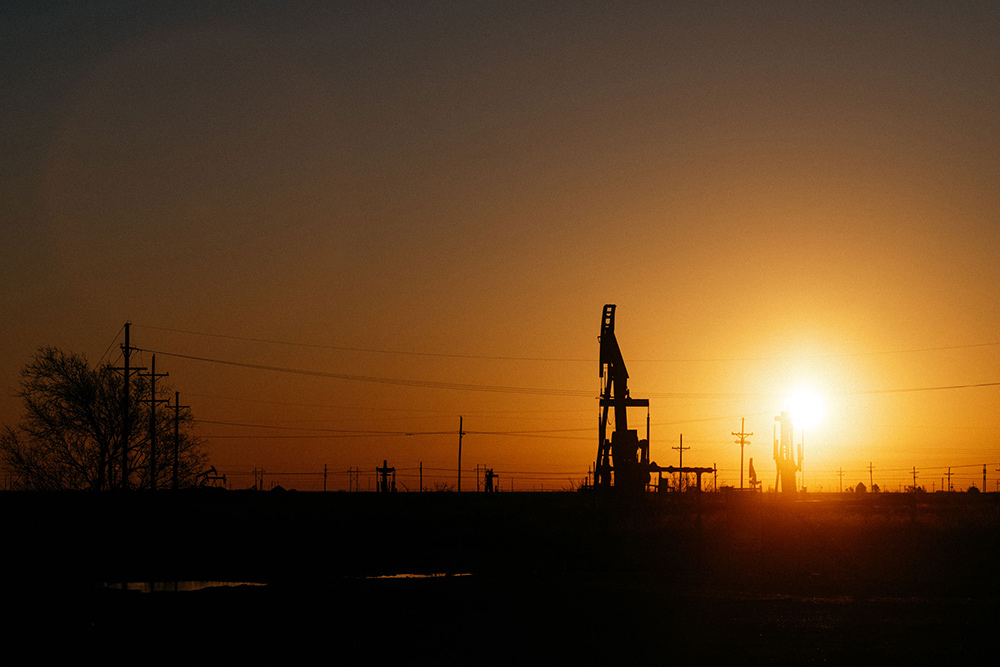
CCS這個夢想因無數困難而寸步難行。有影響力的環境主義者對其表示反對,稱此舉是在轉移人們對可再生能源的注意力。除了原則上的問題之外,它還存在技術難題。第一,如何降低捕捉二氧化碳的成本,這一點如今也掀起了一場技術競賽,但此舉的成本在沒有補貼的前提下異常高昂。第二,為了促使石油公司確保掩埋的二氧化碳能夠安穩地存放在地下,監管方的決心到底有多大。
相對于Oxy,其他原油巨頭對于CCS的熱情并沒有那么高。人們更擔心的是冠狀病毒疫情以及一場全球性的原油價格戰讓原油公司股價在今年3月遭到重挫,然而在這之前,Oxy的股價因最近收購交易造成的債務負擔,跌至15年以來的最低谷。公司在帕米亞盆地的二氧化碳注入主張則成為了其生存的關鍵。因此,在墻上掛著迷人井架照片的Oxy休斯頓總部,公司圍繞CCS做出了多個大膽的決策:一個是帶有巨大風扇的復雜裝置,它可以從空氣中吸收二氧化碳;另一個則是成立“綠色思想污染者俱樂部”——由美國最大的工業廢氣排放者組成的網絡,這個網絡中的排放者將把捕捉的二氧化碳銷售給Oxy,并通過還未修建的管道進行交付,而修建管道則需要美國納稅人的資助。
如果這個計劃能夠奏效,Oxy認為公司將可以確切地稱自家大部分石油是“負碳油”,也就是實際上對地球有好處的原油,因為石油開采過程中安全處置的二氧化碳總量要高于原油燃燒排放的量。此舉還會對Oxy的利潤帶來立竿見影的提振作用,因為它能夠提升原油銷量,并獲得政府發放的補助,對象是那些可以證明自己有能力捕捉人為或“大氣”二氧化碳的企業。對于Oxy來說,這一妙舉還能夠給企業披上綠色環保的形象外衣,并讓公司為未來做好準備,因為更多的石油企業高管開始意識到,為了繼續銷售石油產品,他們將不得不在一定程度上中和其碳氫化合物的排放量。
Oxy的首席執行官維基·霍勒布對我說,她認為自家公司的“運營社會許可”(任何公司在銷售其產品之前需要獲得的消費者和政治首肯)取決于“公司盡全力解決氣候變化的舉措”。霍勒布認為,在這個越發意識到氣候變暖現象的行業中,Oxy的二氧化碳專長是一個競爭優勢。她說:“全世界都將逐漸摒棄化石燃料,但還需要很長一段時間。”在這個過程中,“全球生產的最后一桶油”不應來自于新鉆探的井,而是來自于老油田,并借助了二氧化碳的力量。她說:“此舉碳印跡更低,而且對于地球來說也更高效。”這一點類似于用檸檬制檸檬水,霍勒布的環保論據取材于自家公司的資產組合。
Oxy的低碳事業部戰略發展高級總監安東尼·科通甚至更加直白。公司設立了這個部門來實現這一轉型。受當今力推低碳能源的影響,科通說:“原油公司需要一個存在的理由。”他認為這個理由應當就是CCS。“它給了我們第二次機會。”
消費者注意到,全球氣候變暖是一系列自然災害背后的推手。科研專家稱,如果要把碳排放削減至足以避免氣候變化最惡劣影響的水平,則需要大規模地部署CCS項目。政府間氣候變化專門委員會(IPCC)稱,當前的任務是在2050年前將排放降至“凈零”,意味著任何遺留排放量都必須通過吸收空氣中的二氧化碳這一舉措來抵消。IPCC是一個科研機構,其聲明代表了當前世界對全球氣候變暖的普遍認知。
到目前為止,碳排放量依然在上升。盡管可再生能源的使用正在快速增長,但國際能源署預測,在2018年占據全球能源比重81%的化石燃料在2040年的比重依然將達到74%。如果說有什么方法能夠有效降低經濟中的碳含量,那么則需要將溫室氣體從碳氫化合物的燃燒中剝離出來。同時,這也意味著每年要盡可能多地捕捉由化石燃料燃燒釋放的約330億噸的二氧化碳,并將其存放起來。
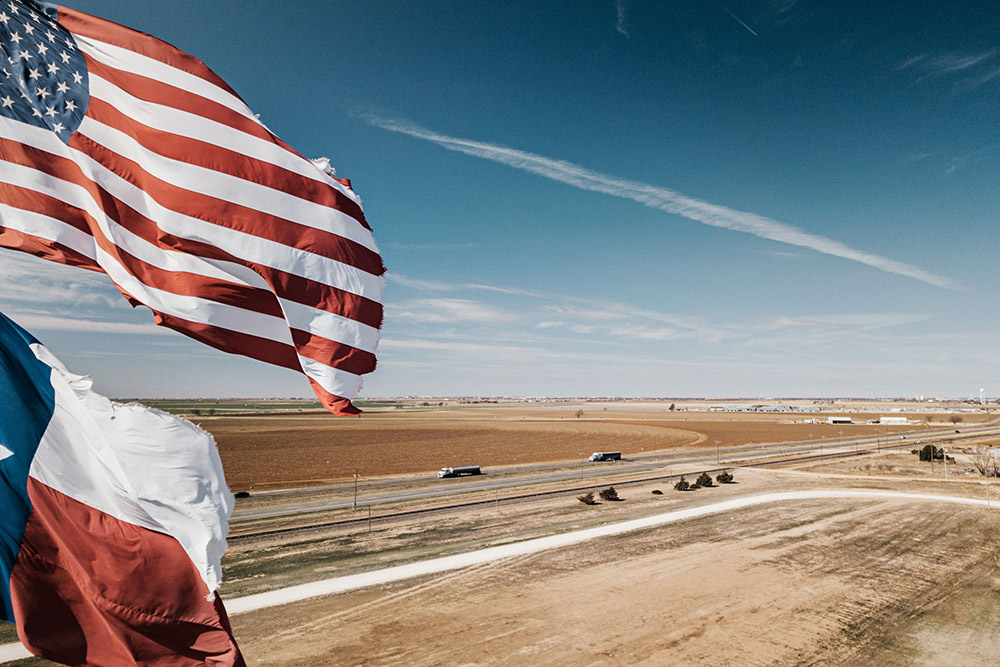
這也是為什么各國政府正在競相支持CCS的原因,從圣克拉門托到華盛頓,從得州到北達科他州,從加拿大到英國,再到挪威等國家都是如此。其中一些政府將這一科技看作是維持其自身化石燃料驅動型經濟的一種手段,其他則將其看作通往未來的橋梁。屆時,可再生能源將變得足夠便宜、好用,基本上能夠獨立支撐整個世界的運轉。
簡而言之,碳捕捉為重工業以及從中受益的行業提供了一個機會,可以讓它們從公眾眼中的氣候變化罪人變為氣候變化救世主。這些行業無需為此放棄自身對化石燃料的依賴,同時還能讓公眾掏腰包。鑒于目前推動污染者采取去污行動的主體是市場,而不是決策者,該技術很有可能成為這些公司當前新的續命契約。1月,全球最大的資產管理商貝萊德集團宣布,公司將重新對其投資進行定位,以減少其氣候風險,包括減少與化石燃料的接觸。2月,英國石油巨頭英國石油公司稱,它將在2050年前實現凈零碳排放目標,而這是一個基本依靠CCS來完成的計劃。
由于真金白銀的突然涌入,擴大CCS項目的競賽已經進入白熱化階段,也就是非常實際的階段。該競賽也釋放了一個非常明確的信號,全球資本正在經歷根本性的轉型,以適應這個不斷變暖的世界。至于這類轉變是否真的能抑制氣候變化,我們不得而知。
大型CCS項目的前景和困難在休斯頓西南郊區的水泥和鋼鐵叢林中若隱若現。2018年,W.A. Parish發電廠曾是美國第七大二氧化碳排放廠商,其碳捕捉項目也是該領域全球最大的項目之一。
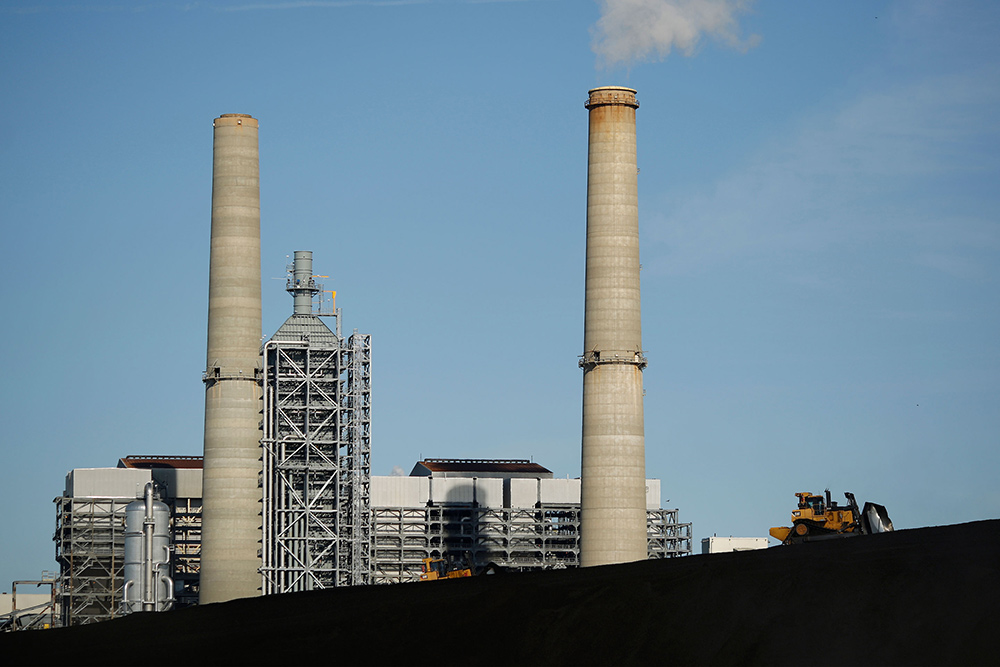
在這個稱為Petra Nova(拉丁語,意為新巖石)的碳捕捉項目中,其前端是一個15英尺直徑的管道,從Parish其中一個火力發電單元的煙囪中吸收其排出來的廢氣,Parish共有4個火力發電單元。二氧化碳在廢氣中的比例約為13%,這些廢氣被吸入管道后進入一個高90多米、由垂直管狀迷宮組成的塔,廢氣在里面會與用于捕捉二氧化碳的化學物質胺混合。隨著剩余的氣體進入大氣,胺則會通過另一個化學反應釋放二氧化碳,這些二氧化碳會進入一個巨大的壓縮裝置。加壓后的二氧化碳進入一個長達130多公里的管道,被輸送至得州范德比爾特附近的一個油田,然后被注入地下,用以幫助生產大量的可售原油。
推出碳捕捉項目的Parish所有者NRG表示,碳捕捉機器一直在按計劃運轉。在2017年和2018年,也就是Petra Nova運行的前兩年,Parish發電廠產生了約3200萬噸二氧化碳,Petra Nova捕捉了其中的約8%,其余的則進入了大氣。但這個小小的勝利便是這個項目的目標,NRG資產管理高級副總裁在帶我參觀工廠時對我說:“它正在做它該做的事。”
然而,從經濟角度來講,Petra Nova項目并未達到預期,在其10億美元的花費中,有1.95億美元來自于聯邦撥款。全球原油價格以及二氧化碳從范德比爾特附近的油田擠壓出來的原油產量低于預期,并在2016年和2017年給NRG帶來了2.09億美元的“減值損失”。
如今,拉嘉諾稱,NRG對于Petra Nova的盈利能力又有了新的期待。其中一個原因在于得州的技術能力:NRG和其合作伙伴預計,隨著他們進一步熟悉該油田,原油的產能將得到進一步提升。一個更加直接的原因在于華盛頓的政治動作:一個優厚的全新碳捕捉稅收減免計劃即將出臺。
在2018年通過的稅收抵免頒布之前,政府曾推出了一個力度小得多的稅收優惠政策。為了獲得這項減免政策,原油行業進行了6年的游說工作,Oxy是其中的主角。我問了Oxy的霍勒布一個問題,公司的游說舉措是否是為了確保原油行業不會屈從于新能源,而迫于無奈,還是說是此舉屬于主動出擊。她一本正經地說道:“毫無疑問,這是主動出擊。”
這項補貼能夠為CCS項目運營商提供12年的稅收減免,如果公司每捕獲一噸人為二氧化碳并將其用于提升原油產量,那么每噸二氧化碳將獲得35美元的稅收減免。如果公司每捕獲一噸二氧化碳并注入不同的地層,也就是含有鹽水而不是油的地層,那么每噸二氧化碳將獲得50美元的稅收減免。研究表明,地下“含鹽蓄水層”可容納的二氧化碳量遠超油田的儲存量——確實,此舉在本世紀末便可以讓全球碳排放成為歷史。
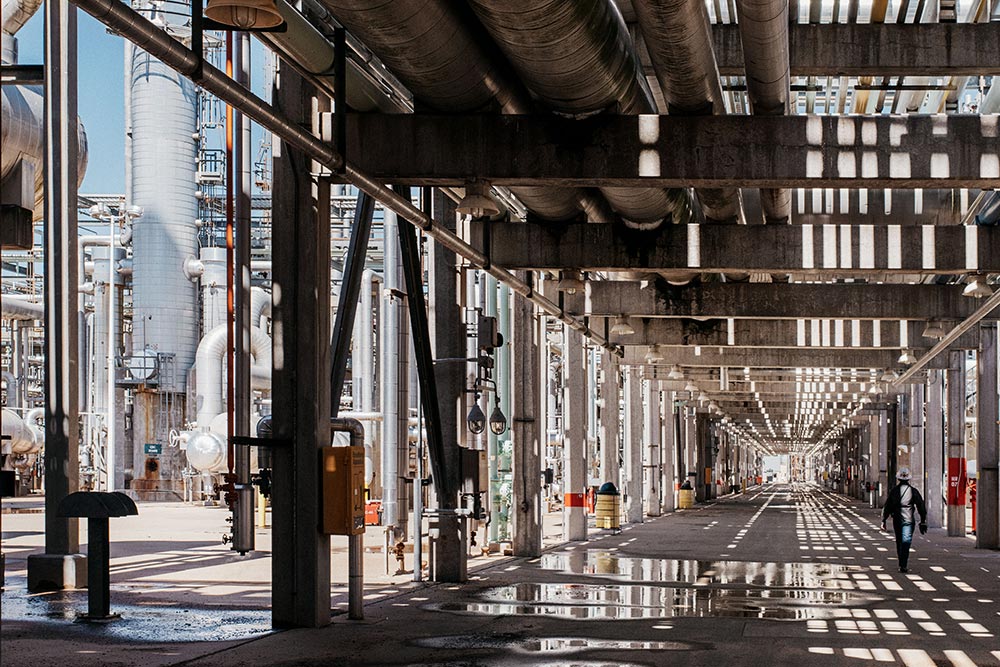
在Oxy獲得了這份補貼之后,公司很快將其投入使用。2018年,公司設立了Oxy低碳事業部,也就是低碳實驗室。因循守舊的化學工程師、擔任該部門技術副總裁的Oxy資深雇員羅伯特·澤勒三世說,其軍令狀是在帕米亞盆地 “用大氣二氧化碳取代天然二氧化碳”。澤勒和我在Oxy總部一間沒有窗戶的沉悶會議室進行了交談。Oxy沒有讓我在澤勒的辦公室與其會面,負責這次會面的女發言人解釋說,部分原因是怕我在其辦公室墻上看到過多的信息。
澤勒用通俗易懂的話說,其部門的標語是:“你擁有的是一片空白的味蕾,得你自己去挖掘。”該團隊在測算之后得到了一個令人吃驚的結果,并找到了問題的結癥。澤勒說,燃燒一桶油通常會產生8000立方英尺的二氧化碳。團隊意識到Oxy通常會將同樣量的二氧化碳注入帕米亞盆地,來生產每一桶強化開采原油。這意味著如果Oxy能夠捕捉到足夠多的二氧化碳來取代它所使用的天然二氧化碳,則可以將產出來的油稱之為“碳中和”油。這個方程式在某些地區甚至更具說服力,因為受那里的地質條件影響,生產每桶油所需的二氧化碳更多。利用CCS從這些地層中生產的原油可能不僅僅是“碳中和油”,而是真正的“負碳油”。
澤勒說:“這才是重點。”
為了捕捉二氧化碳,Oxy將同時采用兩種方式。其中一個理想化的方式是從稀薄的空氣中捕捉二氧化碳。研究表明,如果能夠以經濟的方式從空氣中捕捉足夠多的二氧化碳,那么氣候將極大地受益。少數“直接從空氣中捕捉二氧化碳”的初創企業自那之后備受投資者的青睞。比爾·蓋茨便是加拿大一家名為Carbon Engineering初創企業的早期支持者,該公司在不列顛哥倫比亞省修建了一家試點工廠。Oxy在發現該公司的技術尤為適合在油田規模化應用之后,于2019年1月注資。(美國原油巨頭雪佛龍也投資了該公司,但這兩家公司都未透露具體的投資額。)
當前的挑戰在于降低該技術的成本。澤勒說,Carbon Engineering首個商業規模工廠將于2023年在帕米亞盆地開始運營。該工廠的規模可讓其每年從空氣中捕捉100萬噸的二氧化碳,基本上相當于21.6萬輛汽車排放的二氧化碳。該工廠的預估成本為10億美元。他說:“首個這類工廠的成本太高了。” 但Oxy打算在該地區建造幾十家此類工廠,到了那個時候,澤勒預計每一家工廠的成本將至少下降30%。
Oxy另一個較為現實的策略是鎖定從煙囪人為排放的二氧化碳,類似于Petra Nova。Oxy已經勾勒出了美國最大排放公司的位置圖,例如發電廠、鋼廠、化工廠等等。Oxy的高管們沒有向我展示這個地圖,這可能就是辦公室墻上所展示的內容之一,只是他們不大希望我看到罷了。但排放數據是公開的,而且隨著業界對CCS項目激情的高漲,石油產區將有更多的辦公室在墻上掛這類地圖。它們將展示中西部燃煤郊區的熱點地區,以及橫跨得州和路易斯安娜的原油巨頭。Oxy如今正在努力籌備貨源,也就是這些污染方向大氣中排放的二氧化碳。
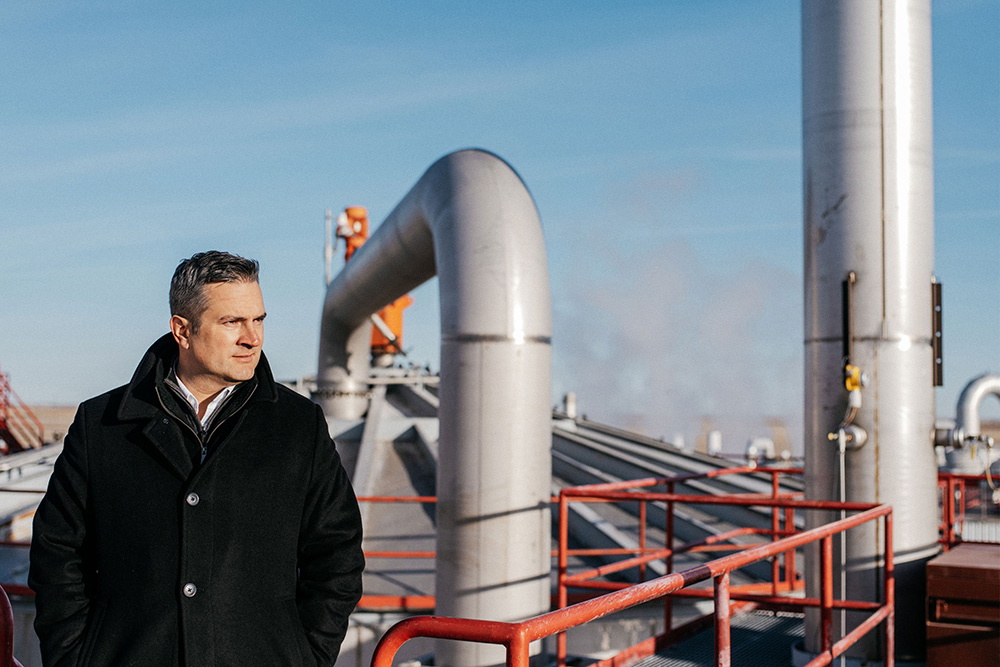
公司如今也在游說華盛頓發放另一種補貼,并打算用其修建管道,將人類產生的二氧化碳運至帕米亞盆地。霍勒布對我說,如果政府不同意,Oxy將引入基礎設施投資基金。她的終極目標是:更便宜的二氧化碳,因為它和電是Oxy帕米亞盆地作業成本中最大的開支。霍勒布說,到2020年代中后期,轉而使用人為廢氣的舉措應該可以將二氧化碳成本降低約20%至30%。
咨詢師和銀行家告訴我,很多其他大型原油公司也已經瞄準了二氧化碳管道優惠政策。一位不愿透露姓名的知名咨詢師解釋說:“他們不會讓所有人都知道其真正的目的,因為屆時人們就會意識到此舉并非是為了社會,而是為了他們自己。”
為了實現CCS的商業化,各大公司需要獲得監管方的同意之后方可向地底注入二氧化碳。管理這類儲存方式的規定還處于初期階段,而且因為司法轄區的不同而不同,同時并未得到檢驗。今春,這些公司敦促說客們吹響了攻占華盛頓的號角,因為當時美國國家稅務局正在制定用于判定誰有資格獲得聯邦稅收優惠的規定;同時也在加州掀起了攻堅戰,因為加州政府可能會提供更多的財務獎勵。
在天然二氧化碳存儲層中,巖石會像儲存石油一樣安全地將氣體儲存在某個地方。全球氣候科學專家組IPCC稱,在有著良好設計和管理的項目中,超過99%的被注射二氧化碳“有可能”能夠儲存上千年的時間。此外,IPCC還表示,二氧化碳隨著時間的推移會變得越來越“懶惰”,因此一個項目或許可以將所有二氧化碳儲存在地下“高達數百萬年的時間”。
問題在于如何確保CCS發揮其作用。監管方希望防止二氧化碳進入可能引發破壞的其他地下區域,包括私人地產或地質層位,例如飲用水資源。他們還希望確保二氧化碳不會在數年甚至是數個世紀之后重新回到地面上。如果與世隔絕的二氧化碳泄露至空氣中,那么其拯救氣候的價值將蕩然無存。同時,因捕捉二氧化碳而獲得補貼的污染方也就無法帶來任何可持續的效益。
這個行業的華盛頓鬧劇的焦點在于,政府是否應聘請獨立第三方來驗證原油公司已經按照其所稱的數量安全地儲存了二氧化碳。Oxy資助的一個行業組織“碳捕捉聯盟”(成員包括殼牌公司)最近向美國國家稅務局致函,稱這類驗證對于這類優惠政策的生命力“至關重要”。這一看法與另一個機構“能源發展中心”發生了沖突,其成員包括埃克森美孚和Denbury Resources,這兩家公司都有廣泛的CCS項目。該組織反對強制性的第三方驗證。英國石油公司最近退出了這一組織,并轉而支持強制性驗證。
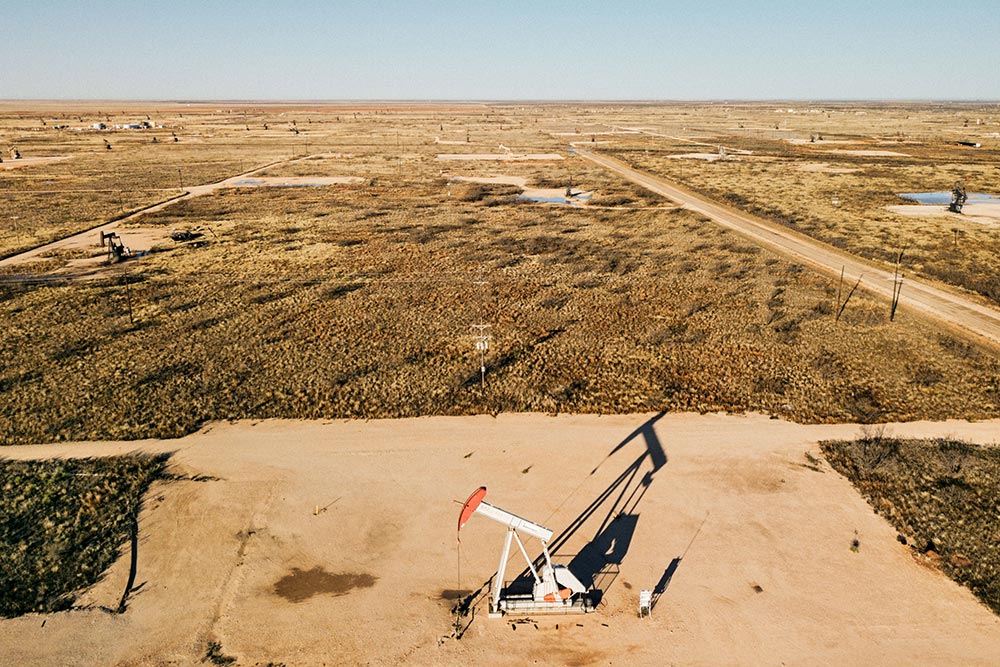
然而,除了華盛頓之外,Oxy也正在嘗試突破某些規定。加州推出的補貼甚至比聯邦稅收優惠更加優厚。如果公司可以證實自己使用了低碳流程來生產在加州銷售的運輸燃料,那么加州政府則會向它們提供“碳積分”,這些公司可以將碳積分出售給其他不夠環保的油品生產商。每減排一噸二氧化碳獲一個積分,后者當前的出售價格為200美元。這是現金,并非是針對稅收的減免。Oxy一直在與加州政府進行交涉,要求其必須采取措施,對Oxy希望注入West Seminole油田的人為二氧化碳進行監控。這些氣體來自于得州潘漢德爾的兩家乙醇廠。
得州普蘭維尤位于盧波克與阿馬里洛之間,其高速路限速120公里,但人們對此并不怎么在乎。這個城鎮(城鎮名稱Plainview拆開后有“一目了然”之意——譯者注)可謂是“名副其實”:在我到訪的清晨,城鎮有著像煎餅一樣平坦的地貌,襯托著廣袤的橙色天空,可謂是一望無垠。乙醇廠七個80.7萬加侖的發酵罐占據著城鎮東部邊緣的地平線,這家工廠的所有者是得州弗里斯克的White Energy。
在美國,制造乙醇的主要原料是玉米,而且乙醇也一直被市場稱為一種清潔能源。但其生產過程會產生大量的二氧化碳,而且整個發酵流程類似于啤酒釀造,聞起來也是如此。在日出之后,我與White Energy的首席執行官布萊恩·斯蒂恩哈德一道圍著廠子轉了一圈。當我們來到乙醇儲罐區域時,他指了指罐子上的一個管道。它每年排出高達35萬噸的二氧化碳。離這里一個小時車程的White Energy希爾福德工廠亦是如此。
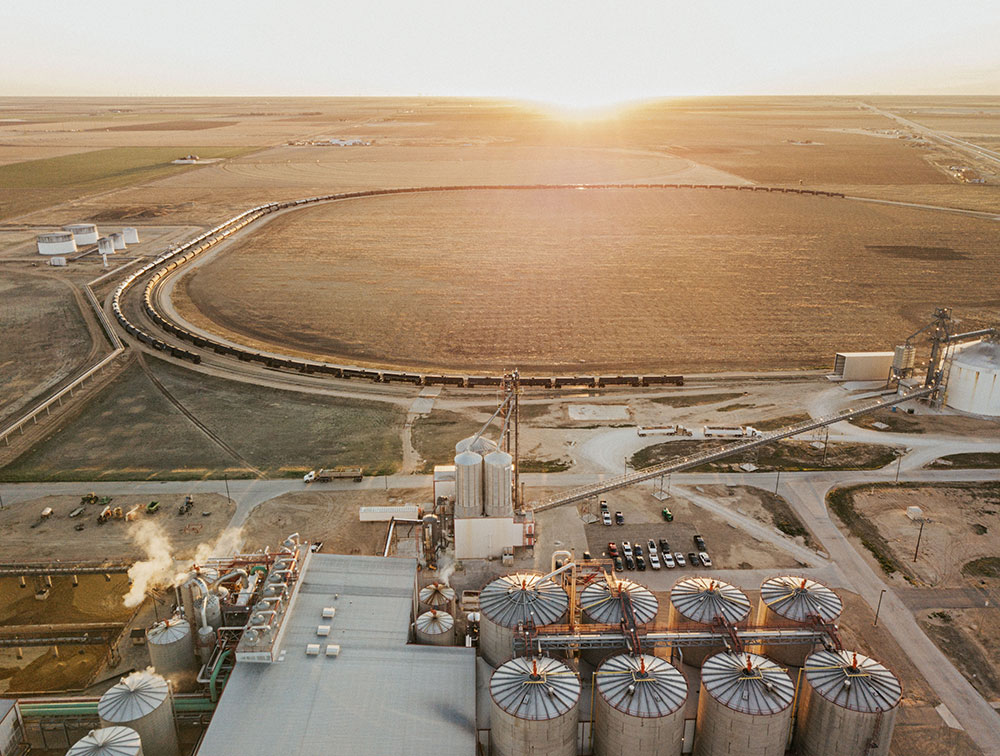
White Energy與Oxy已經向加州空氣資源委員會(簡稱CARB)提出申請,要求加州為其鋪設管道向West Seminole油田輸送二氧化碳并填埋的舉措發放積分。斯蒂恩哈德預計,如果監管方批準,而且White Energy有方法向加州輸送所有產自普蘭維尤和希爾福德的乙醇,那么這些積分將在12年之內帶來3.6億美元至7.2億美元的收益。該項目在這一期間還將獲得聯邦優惠政策,有望抵消約2.75億美元的稅費。在其他地區設立的CCS項目將比這個項目要大得多。
然而障礙在于,加州在確保注入二氧化碳的密閉性方面的規定比聯邦層面更嚴格。但這些規定對實際的影響仍未完全實現。例如,Oxy的首席地質學家比爾·拉茨對我說,CARB一開始希望Oxy將光纖“地音探聽器”插入West Seminole油田每個注射二氧化碳的油井,以監聽這類注射是否會引發地震。Oxy認為,考慮到成本因素,此舉是一個“毫無希望的舉措”。因此Oxy要求CARB允許它在少數幾個井中放置地震探聽器,并在其他地方使用更加便宜的地表地震監測器。
CARB官員稱,他們不會就與Oxy的討論發表評論,而且可能于今春晚些時候對West Seminole是否部署這些儀器進行裁決。3月,CARB對Oxy提交的一篇520頁報告進行了審核,該報告稱油田可以安全地對二氧化碳進行封閉存儲。當我要求查閱這一報告時,遭到了Oxy和CARB的拒絕。后來《財富》雜志向CARB提交了公開記錄請求,該機構才同意這一要求。在這之后,Oxy才提交了一份對此前已提交報告進行了大幅修訂的新版報告,這個版本的報告會刪掉大量公司稱之為“商業機密”的信息。其中并未刪減的內容則涉及澤勒這位Oxy技術高管在休斯頓曾經對我說過的一個四詞結論。當時,我曾經問他人為二氧化碳是否有可能從Oxy帕米亞油田逃逸的問題。這位工程師說:“不會逃逸。”
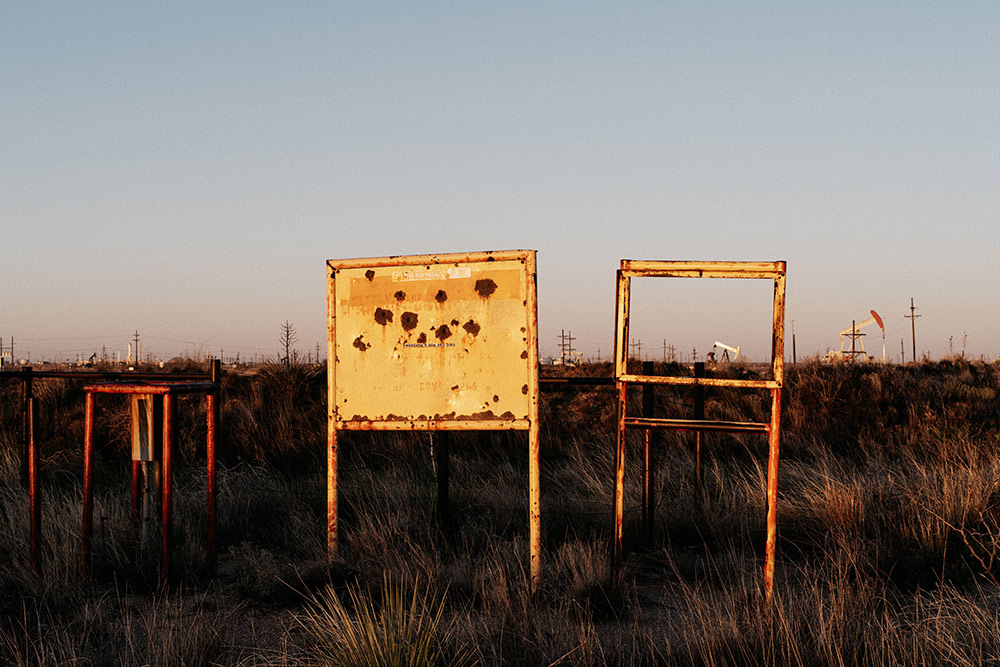
West Seminole油田的路邊入口放置著一個破舊、銹跡斑斑的標志,上面似乎有不少彈孔。在油田的某些區域,鉆井仍在上下往復地運動著,不少老舊機械躺在干燥的矮樹叢上面。這個場景讓人聯想起到了石油工業墓地。
這個地區是否會變成一個另類的墓地——二氧化碳的棲息之地,最終取決于人類將如何應對頑劣復雜的全球氣候變暖現象。前行意味著這個被廣泛視為解決氣候變化問題的重要技術可能最終將得到規模化使用;拖延則會讓該技術無法走出這片天地,而正是在這個地方,當我在一個灰蒙蒙的下午望向油田時,一只孤鳥掠過West Seminole。也正是在這個地方,每天都有更多的二氧化碳流入了大氣。
消滅氣候變化
碳捕捉與隔離(CCS)展現出了其應對氣候變化的潛力,然而,該技術離部署還有很遠一段距離。本文列舉了以下事實來幫助人們了解該技術的未來。
1.越來越沉重的擔子
按照聯合國抑制氣候變化的目標,我們需要將全球與能源相關的二氧化碳排放量從目前每年的約330億噸減至2050年的100億噸以下。國際能源機構稱,這一期間,CCS必須承擔約9%的碳削減任務,到2050年則需承擔28%的削減任務。
2.到目前為止,進展十分緩慢
政府顧問機構國家石油委員會在2019年12月發布的一項調查顯示,在美國,2018年與能源相關的二氧化碳排放總量為53億噸,但美國僅打造了2500萬噸的二氧化碳儲存能力,僅夠填埋的量還不到這些排放量的千分之五。
3.很大的空間
國家石油委員會的報告稱,美國有足夠的地層空間來存儲發電廠和工廠這類“固定”氣源數百年的二氧化碳排放量。
老舊油田是當前存儲能力的主力軍;科學家稱,潛力更大的是陸地和海底天然儲存鹽水(不是原油)的地層。
4.?向地下大空間進軍
CCS始于2019年的戈岡,這是雪佛龍主導的一個澳大利亞項目,它從水下天然氣田捕捉二氧化碳,然后將其注入一個島嶼的地層中。在全部投產之后,它將成為全球最大的CCS項目之一,每年能夠注射高達400萬噸的二氧化碳。(財富中文網)
本文另一版本登載于《財富》雜志2020年4月刊.
譯者:MS
占地30多平方公里、滿是沙塵的West Seminole油田位于得州西部偏遠地區的邊緣。它像一匹老賽馬一樣已經步履艱難地前行了數年的時間,一直靠著其經營者不斷注入的靈藥而得以維繼。
在最近的一個下午,隨著風暴云壓近油田,北風呼嘯而至,數十個銹跡斑斑的井架此起彼伏地晃動著,每一次往復都會發出刺耳的吱呀聲,同時也會抽出更多的黑色黃金。油田運營商Occidental Petroleum向West Seminole注入的藥劑會使三尺蒿下的含油巖層松動,將更多封閉在其地質井眼中的碳氫化合物寶貝擠出巖石。這款魔法般的藥物是一種古老的工業氣體,只不過名聲并不怎么好,它就是二氧化碳。
數十年以來,Occidental公司一直將大量的二氧化碳注入地下,從老油田中榨取原油,而這些油田已經失去了大自然最初賦予它們的魅力。二氧化碳可以有效地將地層原油驅替到油井,然后被出售和燃燒。原油行業已在其他地域采用了這一增壓技術——“提高原油采收率”,而該領域的全球專家則當屬總部位于休斯頓的Occidental公司。在新墨西哥州東部和得州西部數千平方公里的土地上有著一個標志性的狹長地帶,名為帕米亞盆地,Occidental(簡稱Oxy)已經打造了一個數十億美元的基礎設施網絡,來管理海量的二氧化碳。得益于帕米亞巖石的構造,當其海綿似的孔洞充滿了像液體一樣的溫室氣體時,這些巖石就會特別大方地交出所含原油。
Oxy購買從科羅拉多和新墨西哥天然地層中開采的二氧化碳,然后通過大型泵站加壓,通過數千公里長的管道進行運輸。在管道的終端,公司將其注入帕米亞盆地中呈扇形排開、看上去像玩具士兵的數千個油井。這是美國西部一個正在興起的地帶,如今約占全球原油產量的5%。Oxy的設施相當于一個超級高效的碳氫化合物組裝線。
如今,消費者對全球變暖的現象日漸感到憤怒,而且對于尋求相關解決方案的公司,政府也加大了補貼力度。有鑒于此,Oxy提出了一個絕佳的二氧化碳對策。它希望停止向其油田注入從地球中抽取的二氧化碳,而是使用從人為來源獲取的二氧化碳:即發電廠、工廠,甚至是空氣。
公司的目標在于打造一項核心業務流程,也就是長期以來人類正在攻關的一個科研項目:“二氧化碳捕捉和存儲”,又稱CCS。它涉及使用化學手段從煙囪甚至是空氣中捕捉二氧化碳,然后將其注入深層巖石中。該舉措的目的是:人類有望將二氧化碳永久性地埋入地下,而不是將其釋放至大氣中,在那里,二氧化碳正在讓這個讓地球變暖的化學毯子變得越來越厚。
將二氧化碳埋在類似于得州西部的油田地下,能夠允許大型石油公司銷售“碳中和”石油。
CCS這個夢想因無數困難而寸步難行。有影響力的環境主義者對其表示反對,稱此舉是在轉移人們對可再生能源的注意力。除了原則上的問題之外,它還存在技術難題。第一,如何降低捕捉二氧化碳的成本,這一點如今也掀起了一場技術競賽,但此舉的成本在沒有補貼的前提下異常高昂。第二,為了促使石油公司確保掩埋的二氧化碳能夠安穩地存放在地下,監管方的決心到底有多大。
相對于Oxy,其他原油巨頭對于CCS的熱情并沒有那么高。人們更擔心的是冠狀病毒疫情以及一場全球性的原油價格戰讓原油公司股價在今年3月遭到重挫,然而在這之前,Oxy的股價因最近收購交易造成的債務負擔,跌至15年以來的最低谷。公司在帕米亞盆地的二氧化碳注入主張則成為了其生存的關鍵。因此,在墻上掛著迷人井架照片的Oxy休斯頓總部,公司圍繞CCS做出了多個大膽的決策:一個是帶有巨大風扇的復雜裝置,它可以從空氣中吸收二氧化碳;另一個則是成立“綠色思想污染者俱樂部”——由美國最大的工業廢氣排放者組成的網絡,這個網絡中的排放者將把捕捉的二氧化碳銷售給Oxy,并通過還未修建的管道進行交付,而修建管道則需要美國納稅人的資助。
如果這個計劃能夠奏效,Oxy認為公司將可以確切地稱自家大部分石油是“負碳油”,也就是實際上對地球有好處的原油,因為石油開采過程中安全處置的二氧化碳總量要高于原油燃燒排放的量。此舉還會對Oxy的利潤帶來立竿見影的提振作用,因為它能夠提升原油銷量,并獲得政府發放的補助,對象是那些可以證明自己有能力捕捉人為或“大氣”二氧化碳的企業。對于Oxy來說,這一妙舉還能夠給企業披上綠色環保的形象外衣,并讓公司為未來做好準備,因為更多的石油企業高管開始意識到,為了繼續銷售石油產品,他們將不得不在一定程度上中和其碳氫化合物的排放量。
Oxy的首席執行官維基·霍勒布對我說,她認為自家公司的“運營社會許可”(任何公司在銷售其產品之前需要獲得的消費者和政治首肯)取決于“公司盡全力解決氣候變化的舉措”。霍勒布認為,在這個越發意識到氣候變暖現象的行業中,Oxy的二氧化碳專長是一個競爭優勢。她說:“全世界都將逐漸摒棄化石燃料,但還需要很長一段時間。”在這個過程中,“全球生產的最后一桶油”不應來自于新鉆探的井,而是來自于老油田,并借助了二氧化碳的力量。她說:“此舉碳印跡更低,而且對于地球來說也更高效。”這一點類似于用檸檬制檸檬水,霍勒布的環保論據取材于自家公司的資產組合。
Oxy的低碳事業部戰略發展高級總監安東尼·科通甚至更加直白。公司設立了這個部門來實現這一轉型。受當今力推低碳能源的影響,科通說:“原油公司需要一個存在的理由。”他認為這個理由應當就是CCS。“它給了我們第二次機會。”
消費者注意到,全球氣候變暖是一系列自然災害背后的推手。科研專家稱,如果要把碳排放削減至足以避免氣候變化最惡劣影響的水平,則需要大規模地部署CCS項目。政府間氣候變化專門委員會(IPCC)稱,當前的任務是在2050年前將排放降至“凈零”,意味著任何遺留排放量都必須通過吸收空氣中的二氧化碳這一舉措來抵消。IPCC是一個科研機構,其聲明代表了當前世界對全球氣候變暖的普遍認知。
到目前為止,碳排放量依然在上升。盡管可再生能源的使用正在快速增長,但國際能源署預測,在2018年占據全球能源比重81%的化石燃料在2040年的比重依然將達到74%。如果說有什么方法能夠有效降低經濟中的碳含量,那么則需要將溫室氣體從碳氫化合物的燃燒中剝離出來。同時,這也意味著每年要盡可能多地捕捉由化石燃料燃燒釋放的約330億噸的二氧化碳,并將其存放起來。
這也是為什么各國政府正在競相支持CCS的原因,從圣克拉門托到華盛頓,從得州到北達科他州,從加拿大到英國,再到挪威等國家都是如此。其中一些政府將這一科技看作是維持其自身化石燃料驅動型經濟的一種手段,其他則將其看作通往未來的橋梁。屆時,可再生能源將變得足夠便宜、好用,基本上能夠獨立支撐整個世界的運轉。
簡而言之,碳捕捉為重工業以及從中受益的行業提供了一個機會,可以讓它們從公眾眼中的氣候變化罪人變為氣候變化救世主。這些行業無需為此放棄自身對化石燃料的依賴,同時還能讓公眾掏腰包。鑒于目前推動污染者采取去污行動的主體是市場,而不是決策者,該技術很有可能成為這些公司當前新的續命契約。1月,全球最大的資產管理商貝萊德集團宣布,公司將重新對其投資進行定位,以減少其氣候風險,包括減少與化石燃料的接觸。2月,英國石油巨頭英國石油公司稱,它將在2050年前實現凈零碳排放目標,而這是一個基本依靠CCS來完成的計劃。
由于真金白銀的突然涌入,擴大CCS項目的競賽已經進入白熱化階段,也就是非常實際的階段。該競賽也釋放了一個非常明確的信號,全球資本正在經歷根本性的轉型,以適應這個不斷變暖的世界。至于這類轉變是否真的能抑制氣候變化,我們不得而知。
大型CCS項目的前景和困難在休斯頓西南郊區的水泥和鋼鐵叢林中若隱若現。2018年,W.A. Parish發電廠曾是美國第七大二氧化碳排放廠商,其碳捕捉項目也是該領域全球最大的項目之一。
我是在一個下著毛毛細雨的冬季清晨去的Parish,路上我一直在努力思考一個問題:CCS或許能讓我們走向綠色的未來。在離Parish還有數公里遠的高速路上,我第一眼看到的是發電廠4個高大的煙囪,約有150多米高,讓地平線上的一切都顯得那么渺小。我來到了發電廠入口,這里有一個紅白藍相間的標牌,上面寫著“自豪與電力”。我還看到一個異常巨大的黑色煤堆,兩輛黃色的掘土機正在上面緩緩前行,轟鳴著將這些固體燃料鋪開,從我的角度來看,這些掘土機就像是玩具卡車。煤來自于懷俄明州,通常由120節車廂的火車每兩天運一次。
在這個稱為Petra Nova(拉丁語,意為新巖石)的碳捕捉項目中,其前端是一個15英尺直徑的管道,從Parish其中一個火力發電單元的煙囪中吸收其排出來的廢氣,Parish共有4個火力發電單元。二氧化碳在廢氣中的比例約為13%,這些廢氣被吸入管道后進入一個高90多米、由垂直管狀迷宮組成的塔,廢氣在里面會與用于捕捉二氧化碳的化學物質胺混合。隨著剩余的氣體進入大氣,胺則會通過另一個化學反應釋放二氧化碳,這些二氧化碳會進入一個巨大的壓縮裝置。加壓后的二氧化碳進入一個長達130多公里的管道,被輸送至得州范德比爾特附近的一個油田,然后被注入地下,用以幫助生產大量的可售原油。
推出碳捕捉項目的Parish所有者NRG表示,碳捕捉機器一直在按計劃運轉。在2017年和2018年,也就是Petra Nova運行的前兩年,Parish發電廠產生了約3200萬噸二氧化碳,Petra Nova捕捉了其中的約8%,其余的則進入了大氣。但這個小小的勝利便是這個項目的目標,NRG資產管理高級副總裁在帶我參觀工廠時對我說:“它正在做它該做的事。”
然而,從經濟角度來講,Petra Nova項目并未達到預期,在其10億美元的花費中,有1.95億美元來自于聯邦撥款。全球原油價格以及二氧化碳從范德比爾特附近的油田擠壓出來的原油產量低于預期,并在2016年和2017年給NRG帶來了2.09億美元的“減值損失”。
如今,拉嘉諾稱,NRG對于Petra Nova的盈利能力又有了新的期待。其中一個原因在于得州的技術能力:NRG和其合作伙伴預計,隨著他們進一步熟悉該油田,原油的產能將得到進一步提升。一個更加直接的原因在于華盛頓的政治動作:一個優厚的全新碳捕捉稅收減免計劃即將出臺。
在2018年通過的稅收抵免頒布之前,政府曾推出了一個力度小得多的稅收優惠政策。為了獲得這項減免政策,原油行業進行了6年的游說工作,Oxy是其中的主角。我問了Oxy的霍勒布一個問題,公司的游說舉措是否是為了確保原油行業不會屈從于新能源,而迫于無奈,還是說是此舉屬于主動出擊。她一本正經地說道:“毫無疑問,這是主動出擊。”
這項補貼能夠為CCS項目運營商提供12年的稅收減免,如果公司每捕獲一噸人為二氧化碳并將其用于提升原油產量,那么每噸二氧化碳將獲得35美元的稅收減免。如果公司每捕獲一噸二氧化碳并注入不同的地層,也就是含有鹽水而不是油的地層,那么每噸二氧化碳將獲得50美元的稅收減免。研究表明,地下“含鹽蓄水層”可容納的二氧化碳量遠超油田的儲存量——確實,此舉在本世紀末便可以讓全球碳排放成為歷史。
在Oxy獲得了這份補貼之后,公司很快將其投入使用。2018年,公司設立了Oxy低碳事業部,也就是低碳實驗室。因循守舊的化學工程師、擔任該部門技術副總裁的Oxy資深雇員羅伯特·澤勒三世說,其軍令狀是在帕米亞盆地 “用大氣二氧化碳取代天然二氧化碳”。澤勒和我在Oxy總部一間沒有窗戶的沉悶會議室進行了交談。Oxy沒有讓我在澤勒的辦公室與其會面,負責這次會面的女發言人解釋說,部分原因是怕我在其辦公室墻上看到過多的信息。
澤勒用通俗易懂的話說,其部門的標語是:“你擁有的是一片空白的味蕾,得你自己去挖掘。”該團隊在測算之后得到了一個令人吃驚的結果,并找到了問題的結癥。澤勒說,燃燒一桶油通常會產生8000立方英尺的二氧化碳。團隊意識到Oxy通常會將同樣量的二氧化碳注入帕米亞盆地,來生產每一桶強化開采原油。這意味著如果Oxy能夠捕捉到足夠多的二氧化碳來取代它所使用的天然二氧化碳,則可以將產出來的油稱之為“碳中和”油。這個方程式在某些地區甚至更具說服力,因為受那里的地質條件影響,生產每桶油所需的二氧化碳更多。利用CCS從這些地層中生產的原油可能不僅僅是“碳中和油”,而是真正的“負碳油”。
澤勒說:“這才是重點。”
為了捕捉二氧化碳,Oxy將同時采用兩種方式。其中一個理想化的方式是從稀薄的空氣中捕捉二氧化碳。研究表明,如果能夠以經濟的方式從空氣中捕捉足夠多的二氧化碳,那么氣候將極大地受益。少數“直接從空氣中捕捉二氧化碳”的初創企業自那之后備受投資者的青睞。比爾·蓋茨便是加拿大一家名為Carbon Engineering初創企業的早期支持者,該公司在不列顛哥倫比亞省修建了一家試點工廠。Oxy在發現該公司的技術尤為適合在油田規模化應用之后,于2019年1月注資。(美國原油巨頭雪佛龍也投資了該公司,但這兩家公司都未透露具體的投資額。)
當前的挑戰在于降低該技術的成本。澤勒說,Carbon Engineering首個商業規模工廠將于2023年在帕米亞盆地開始運營。該工廠的規模可讓其每年從空氣中捕捉100萬噸的二氧化碳,基本上相當于21.6萬輛汽車排放的二氧化碳。該工廠的預估成本為10億美元。他說:“首個這類工廠的成本太高了。” 但Oxy打算在該地區建造幾十家此類工廠,到了那個時候,澤勒預計每一家工廠的成本將至少下降30%。
Oxy另一個較為現實的策略是鎖定從煙囪人為排放的二氧化碳,類似于Petra Nova。Oxy已經勾勒出了美國最大排放公司的位置圖,例如發電廠、鋼廠、化工廠等等。Oxy的高管們沒有向我展示這個地圖,這可能就是辦公室墻上所展示的內容之一,只是他們不大希望我看到罷了。但排放數據是公開的,而且隨著業界對CCS項目激情的高漲,石油產區將有更多的辦公室在墻上掛這類地圖。它們將展示中西部燃煤郊區的熱點地區,以及橫跨得州和路易斯安娜的原油巨頭。Oxy如今正在努力籌備貨源,也就是這些污染方向大氣中排放的二氧化碳。
公司如今也在游說華盛頓發放另一種補貼,并打算用其修建管道,將人類產生的二氧化碳運至帕米亞盆地。霍勒布對我說,如果政府不同意,Oxy將引入基礎設施投資基金。她的終極目標是:更便宜的二氧化碳,因為它和電是Oxy帕米亞盆地作業成本中最大的開支。霍勒布說,到2020年代中后期,轉而使用人為廢氣的舉措應該可以將二氧化碳成本降低約20%至30%。
咨詢師和銀行家告訴我,很多其他大型原油公司也已經瞄準了二氧化碳管道優惠政策。一位不愿透露姓名的知名咨詢師解釋說:“他們不會讓所有人都知道其真正的目的,因為屆時人們就會意識到此舉并非是為了社會,而是為了他們自己。”
為了實現CCS的商業化,各大公司需要獲得監管方的同意之后方可向地底注入二氧化碳。管理這類儲存方式的規定還處于初期階段,而且因為司法轄區的不同而不同,同時并未得到檢驗。今春,這些公司敦促說客們吹響了攻占華盛頓的號角,因為當時美國國家稅務局正在制定用于判定誰有資格獲得聯邦稅收優惠的規定;同時也在加州掀起了攻堅戰,因為加州政府可能會提供更多的財務獎勵。
在天然二氧化碳存儲層中,巖石會像儲存石油一樣安全地將氣體儲存在某個地方。全球氣候科學專家組IPCC稱,在有著良好設計和管理的項目中,超過99%的被注射二氧化碳“有可能”能夠儲存上千年的時間。此外,IPCC還表示,二氧化碳隨著時間的推移會變得越來越“懶惰”,因此一個項目或許可以將所有二氧化碳儲存在地下“高達數百萬年的時間”。
問題在于如何確保CCS發揮其作用。監管方希望防止二氧化碳進入可能引發破壞的其他地下區域,包括私人地產或地質層位,例如飲用水資源。他們還希望確保二氧化碳不會在數年甚至是數個世紀之后重新回到地面上。如果與世隔絕的二氧化碳泄露至空氣中,那么其拯救氣候的價值將蕩然無存。同時,因捕捉二氧化碳而獲得補貼的污染方也就無法帶來任何可持續的效益。
這個行業的華盛頓鬧劇的焦點在于,政府是否應聘請獨立第三方來驗證原油公司已經按照其所稱的數量安全地儲存了二氧化碳。Oxy資助的一個行業組織“碳捕捉聯盟”(成員包括殼牌公司)最近向美國國家稅務局致函,稱這類驗證對于這類優惠政策的生命力“至關重要”。這一看法與另一個機構“能源發展中心”發生了沖突,其成員包括埃克森美孚和Denbury Resources,這兩家公司都有廣泛的CCS項目。該組織反對強制性的第三方驗證。英國石油公司最近退出了這一組織,并轉而支持強制性驗證。
然而,除了華盛頓之外,Oxy也正在嘗試突破某些規定。加州推出的補貼甚至比聯邦稅收優惠更加優厚。如果公司可以證實自己使用了低碳流程來生產在加州銷售的運輸燃料,那么加州政府則會向它們提供“碳積分”,這些公司可以將碳積分出售給其他不夠環保的油品生產商。每減排一噸二氧化碳獲一個積分,后者當前的出售價格為200美元。這是現金,并非是針對稅收的減免。Oxy一直在與加州政府進行交涉,要求其必須采取措施,對Oxy希望注入West Seminole油田的人為二氧化碳進行監控。這些氣體來自于得州潘漢德爾的兩家乙醇廠。
得州普蘭維尤位于盧波克與阿馬里洛之間,其高速路限速120公里,但人們對此并不怎么在乎。這個城鎮(城鎮名稱Plainview拆開后有“一目了然”之意——譯者注)可謂是“名副其實”:在我到訪的清晨,城鎮有著像煎餅一樣平坦的地貌,襯托著廣袤的橙色天空,可謂是一望無垠。乙醇廠七個80.7萬加侖的發酵罐占據著城鎮東部邊緣的地平線,這家工廠的所有者是得州弗里斯克的White Energy。
在美國,制造乙醇的主要原料是玉米,而且乙醇也一直被市場稱為一種清潔能源。但其生產過程會產生大量的二氧化碳,而且整個發酵流程類似于啤酒釀造,聞起來也是如此。在日出之后,我與White Energy的首席執行官布萊恩·斯蒂恩哈德一道圍著廠子轉了一圈。當我們來到乙醇儲罐區域時,他指了指罐子上的一個管道。它每年排出高達35萬噸的二氧化碳。離這里一個小時車程的White Energy希爾福德工廠亦是如此。
White Energy與Oxy已經向加州空氣資源委員會(簡稱CARB)提出申請,要求加州為其鋪設管道向West Seminole油田輸送二氧化碳并填埋的舉措發放積分。斯蒂恩哈德預計,如果監管方批準,而且White Energy有方法向加州輸送所有產自普蘭維尤和希爾福德的乙醇,那么這些積分將在12年之內帶來3.6億美元至7.2億美元的收益。該項目在這一期間還將獲得聯邦優惠政策,有望抵消約2.75億美元的稅費。在其他地區設立的CCS項目將比這個項目要大得多。
然而障礙在于,加州在確保注入二氧化碳的密閉性方面的規定比聯邦層面更嚴格。但這些規定對實際的影響仍未完全實現。例如,Oxy的首席地質學家比爾·拉茨對我說,CARB一開始希望Oxy將光纖“地音探聽器”插入West Seminole油田每個注射二氧化碳的油井,以監聽這類注射是否會引發地震。Oxy認為,考慮到成本因素,此舉是一個“毫無希望的舉措”。因此Oxy要求CARB允許它在少數幾個井中放置地震探聽器,并在其他地方使用更加便宜的地表地震監測器。
CARB官員稱,他們不會就與Oxy的討論發表評論,而且可能于今春晚些時候對West Seminole是否部署這些儀器進行裁決。3月,CARB對Oxy提交的一篇520頁報告進行了審核,該報告稱油田可以安全地對二氧化碳進行封閉存儲。當我要求查閱這一報告時,遭到了Oxy和CARB的拒絕。后來《財富》雜志向CARB提交了公開記錄請求,該機構才同意這一要求。在這之后,Oxy才提交了一份對此前已提交報告進行了大幅修訂的新版報告,這個版本的報告會刪掉大量公司稱之為“商業機密”的信息。其中并未刪減的內容則涉及澤勒這位Oxy技術高管在休斯頓曾經對我說過的一個四詞結論。當時,我曾經問他人為二氧化碳是否有可能從Oxy帕米亞油田逃逸的問題。這位工程師說:“不會逃逸。”
West Seminole油田的路邊入口放置著一個破舊、銹跡斑斑的標志,上面似乎有不少彈孔。在油田的某些區域,鉆井仍在上下往復地運動著,不少老舊機械躺在干燥的矮樹叢上面。這個場景讓人聯想起到了石油工業墓地。
這個地區是否會變成一個另類的墓地——二氧化碳的棲息之地,最終取決于人類將如何應對頑劣復雜的全球氣候變暖現象。前行意味著這個被廣泛視為解決氣候變化問題的重要技術可能最終將得到規模化使用;拖延則會讓該技術無法走出這片天地,而正是在這個地方,當我在一個灰蒙蒙的下午望向油田時,一只孤鳥掠過West Seminole。也正是在這個地方,每天都有更多的二氧化碳流入了大氣。
消滅氣候變化
碳捕捉與隔離(CCS)展現出了其應對氣候變化的潛力,然而,該技術離部署還有很遠一段距離。本文列舉了以下事實來幫助人們了解該技術的未來。
1.越來越沉重的擔子
按照聯合國抑制氣候變化的目標,我們需要將全球與能源相關的二氧化碳排放量從目前每年的約330億噸減至2050年的100億噸以下。國際能源機構稱,這一期間,CCS必須承擔約9%的碳削減任務,到2050年則需承擔28%的削減任務。
2.到目前為止,進展十分緩慢
政府顧問機構國家石油委員會在2019年12月發布的一項調查顯示,在美國,2018年與能源相關的二氧化碳排放總量為53億噸,但美國僅打造了2500萬噸的二氧化碳儲存能力,僅夠填埋的量還不到這些排放量的千分之五。
3.很大的空間
國家石油委員會的報告稱,美國有足夠的地層空間來存儲發電廠和工廠這類“固定”氣源數百年的二氧化碳排放量。
老舊油田是當前存儲能力的主力軍;科學家稱,潛力更大的是陸地和海底天然儲存鹽水(不是原油)的地層。
4.向地下大空間進軍
CCS始于2019年的戈岡,這是雪佛龍主導的一個澳大利亞項目,它從水下天然氣田捕捉二氧化碳,然后將其注入一個島嶼的地層中。在全部投產之后,它將成為全球最大的CCS項目之一,每年能夠注射高達400萬噸的二氧化碳。(財富中文網)
本文另一版本登載于《財富》雜志2020年4月刊。
譯者:MS
Like an old racehorse, the West Seminole oilfield, a 12-square-mile patch of dirt on Texas’s far western flank, has been trudging along for years, kept kicking by an elixir its jockey shoots into its rump.
On a recent afternoon, as storm clouds blanketed the field and a winter wind howled, dozens of rusty pump jacks rocked up and down, groaning with each revolution as they sucked out more black gold. The drug that the field’s operator, Occidental Petroleum, injects into West Seminole loosens the oil in the stone beneath the sagebrush—forcing from the rock ever more of the hydrocarbon treasure locked inside its geologic pores. The magic medicine is an old industrial gas with a new image problem: carbon dioxide.
For decades, Occidental has been pumping massive quantities of CO? into the ground, juicing the flow of oil in aging fields that have lost the oomph nature originally gave them. The CO? frees more oil to rise to the surface, where it can be sold and burned. The petroleum industry has used this turbocharging technique—called “enhanced oil recovery”—elsewhere. But Houston-based Occidental is a global expert. Across thousands of square miles of eastern New Mexico and western Texas, on the iconic swath of land called the Permian Basin, the company nicknamed Oxy has built a multibillion-dollar web of infrastructure to manage vast quantities of the CO?. The Permian rocks’ structure makes them particularly giving of their oil when their spongelike holes are coaxed with the greenhouse gas in liquid-like form.
Oxy buys CO? drilled from natural formations in Colorado and New Mexico, then sends it through thousands of miles of pipelines, goaded by massive pump stations. At the end of the line, the company blasts it into thousands of wells that fan out like toy soldiers across the Permian, a booming chunk of the American West that now accounts, extraordinarily, for some 5% of global oil production. Oxy’s setup amounts to a ruthlessly efficient assembly line for hydrocarbons.
Now, amid rising consumer anger about global warming and ballooning government subsidies for companies working to solve it, Oxy is attempting a stunning CO? pivot. It hopes to stop pumping into its fields CO? extracted from the earth, and instead deploy CO? sucked from man-made sources: from power plants, factories, and even thin air.
The company’s ambition is to build into a core business a process that has long been little more than a science project: “carbon capture and storage,” or CCS. It involves chemically snagging CO?, typically as it’s wafting out of smokestacks but also from ambient air itself, and then injecting it into subterranean rocks. The goal: Rather than continue to dump CO? into the atmosphere, where it’s thickening a chemical blanket that’s warming the earth, humanity can bury it underground, ostensibly forever.
Countless difficulties imperil the CCS dream. Influential environmentalists oppose it, arguing it diverts attention from renewable energy. Beyond principle, technical dilemmas loom. One, now fueling a technological race, is how to slash the cost of capturing CO?, which remains too expensive to work without subsidy. Another, now evolving into a high-stakes lobbying fight, is how far regulators should go in forcing oil companies to prove that CO? they’re sending into rock stays safely where it’s put.
No member of Big Oil is gunning harder for CCS than Oxy. Even before concerns about the coronavirus—and a global petroleum-price war—sent oil-company shares tumbling this March, Oxy was trading around a 15-year low, burdened by debt from a recent acquisition. And its CO?-fueled position in the Permian is core to its viability. So from its Houston headquarters, whose walls are hung with glamour shots of oil rigs, Oxy is making a series of bold CCS bets. One is on a contraption of massive fans that would suck CO? from the air. Another is a bid to establish what amounts to a green-minded polluters’ club: a network in which some of America’s biggest industrial emitters would capture and sell CO? to Oxy, delivering it through an as-yet-unbuilt pipeline bankrolled with the help of American taxpayers.
If the plans work, Oxy contends, the company will be able to accurately say that much of its oil is “carbon negative”—actually good for the planet, because extracting it would involve the safe disposal of more CO? than burning it would emit. More immediately accretive to Oxy’s bottom line, the move would boost its oil sales and also capture subsidies governments are rolling out to companies that can prove they’re capturing man-made, or “anthropogenic,” CO?. For Oxy, such a masterstroke might repaint its brown corporate image green. It also could gird the company for a future in which, more oil executives are coming to believe, they will have to somehow neutralize emissions from their hydrocarbons in order to continue selling them.
Vicki Hollub, Oxy’s CEO, tells me that she has concluded that her company’s “social license to operate”—the consumer and political buy-in any firm needs to sell its product—depends on doing “all that we can do to address climate change.” The trick will be to do so while satisfying shareholders. Hollub argues Oxy’s CO? expertise is a competitive edge in an industry ever more concerned about a warming planet. “The world will transition out of fossil fuels, but it’s going to take quite a long time,” she says. Along the way, “the last barrel of oil produced in the world” should come not from a new well but from an aging field, helped by CO?. “The carbon footprint is lower,” she says, “and it’s just more efficient for the planet.” Like lemonade from lemons, her environmental argument leverages her corporate portfolio.
Anthony Cottone, senior director for strategic development at Oxy Low Carbon Ventures, a unit the company created to engineer this shift, is even more direct. Buffeted by today’s push for lower-carbon energy, “oil companies need a reason to exist,” says Cottone, who contends that reason should be to serve up CCS. “It’s a second chance.”
****
As consumers eye a torrent of natural disasters indicative of a warming world, scientific experts say curbing carbon emissions enough to avert the worst consequences of climate change will require deploying CCS at grand scale. The existential task, according to the Intergovernmental Panel on Climate Change, or IPCC, a scientific body whose pronouncements frame conventional wisdom on global warming, is to slash emissions by 2050 to “net zero,” meaning any remaining emissions would have to be offset by pulling CO? out of the air.
So far, emissions continue to rise. Although renewable energy use is growing fast, the International Energy Agency projects fossil fuels, which provided 81% of global energy in 2018, still will provide 74% in 2040. If there’s any chance to meaningfully decarbonize the economy, it will require decoupling the emission of greenhouse gases from the burning of hydrocarbons. And that will mean grabbing as much as possible of the approximately 33 billion metric tons of CO? that fossil fuel combustion produces annually and siphoning it away.
That is why governments are racing to support CCS—from Sacramento to Washington, from Texas to North Dakota, from Canada to the U.K. to Norway and beyond. Some of them view the technology as a way to sustain their own fossil-fueled economies. Others see it as a bridge to a future when renewable energy is cheap and robust enough to power the world largely on its own.
Carbon capture, in short, presents heavy industry and all who profit from it with the possibility of switching in the public eye from climate villains to climate saviors—without abandoning their reliance on fossil fuel, and largely at public expense. It’s a potential new lease on life at a time when markets—far more than policymakers—are pushing polluters to clean up their acts. In January, BlackRock, the world’s largest asset manager, announced it will reorient its investments to trim their climate risk, including reducing fossil fuel exposure. In February, BP, the British oil behemoth, said it would aim for net-zero carbon emissions by 2050, a plan that depends largely on CCS.
With real money suddenly on the line, the race to scale up CCS has entered a cutthroat, meaning very real, phase. The competition is among the surest signs that global capitalism is undergoing a fundamental transformation to adapt to a warming world. Whether the metamorphosis will actually check climate change is, alas, another question.
****
The promise and the difficulty of large-scale CCS loom in cement and steel over the outskirts of southwest Houston. The W.A. Parish Generating Station was the seventh-largest CO? emitter in the U.S. in 2018. It also houses one of the largest carbon-capture projects in the world.
As I approach Parish on a drizzly winter morning, I try to wrap my head around the notion that CCS might anchor a green future. My first glimpse, from several miles away on the highway, is of the plant’s four dominant smokestacks. They tower some 500 feet, dwarfing anything else on the horizon. When I reach the entrance, where the red, white, and blue sign boasts “Pride & Power,” I see a black pile of coal so massive that two yellow earth-moving machines crawling atop it, grunting as they spread the solid fuel, look from my vantage point like toy trucks. The coal arrives from Wyoming, typically twice daily, in trains about 120 cars long.
The carbon-capture project—dubbed Petra Nova, Latin for “new rock”—starts with a 15-foot-diameter pipe that sucks, from the smokestack of one of Parish’s four coal-fired power-generating units, some of the waste gas it coughs out. CO? constitutes about 13% of that waste gas, which whooshes through the pipe and into a 300-foot-tall tower. That tower is a vertical maze of tubes, inside which the gas mixes with a chemical, amine, that grabs the CO?. As the rest of the gas heads into the sky, the amine, in another chemical reaction, releases the CO?, which flows into huge compressors. Pressurized, the CO? enters a pipeline, travels 81 miles to an oilfield near Vanderbilt, Texas, and is injected into the earth—with the aim of helping produce a lot of sellable oil.
The carbon-capture machinery is working as planned, says NRG, the power producer that helped launch the project and owns Parish. In 2017 and 2018, Petra Nova’s first two full years of operation, it captured about 8% of the approximately 32 million tons of CO? that the Parish plant produced. The rest has risen into the atmosphere. But that small victory was the objective, Judith Lagano, NRG’s senior vice president of asset management, tells me during a tour of the plant: “It’s doing what it was supposed to do.”
Financially, however, Petra Nova, whose $1 billion price tag was defrayed by $195 million in federal grants, has underperformed. Global oil prices and the quantity of oil the CO? has wrung from the field near Vanderbilt have fallen below expectations and triggered $209 million in “impairment losses” for NRG in 2016 and 2017.
Today, Lagano says, NRG has new hopes for Petra Nova’s profitability. One reason is Texas know-how: NRG and its partners expect, as they’re getting more familiar with the oilfield, to boost production. A more immediate reason is Washington politicking: A newly generous carbon-capture tax break is about to start flowing.
****
The tax credit, passed in 2018, succeeds a much-smaller prior version. It results from six years of oil-industry lobbying, in large part by Oxy. When I ask Oxy’s Hollub whether that push was defensive, to ensure her industry didn’t lose ground to renewables, or offensive, to win Oxy market share over oil rivals, she doesn’t flinch. “It was, without a doubt, an offensive move,” she says.
The subsidy gives operators of CCS projects, for 12 years, a tax credit ramping up to $35 for every metric ton of man-made CO? they catch and deploy to boost oil production. It gives them a credit reaching $50 for every metric ton they capture and shoot into a different sort of geology, filled not with oil but with salty water. Studies suggest underground “saline aquifers” could be stuffed with quantities of CO? that dwarf those in oilfields—indeed, that could entomb global emissions through the end of the century.
Once Oxy won the subsidy, it raced to take advantage of it. In 2018, it created Oxy Low Carbon Ventures, essentially a low-carbon skunkworks. Its marching orders were “to replace natural CO? with anthropogenic CO?” in the Permian, says Robert Zeller III, a buttoned-down chemical engineer and Oxy lifer who was tapped as the unit’s vice president for technology. Zeller and I are speaking at Oxy’s headquarters, in a windowless and mirthless conference room. Oxy won’t let me meet with Zeller in his office, in part for fear, the spokeswoman overseeing the discussion explains, that I’ll see something on the walls that’s too revealing.
In plain English, says Zeller, his unit’s mandate was: “You have a blank palate. Go figure it out.” The team figured it out—through some calculations that bowled them over. Burning a barrel of oil typically coughs out about 8,000 cubic feet of CO?, Zeller says. The team realized that Oxy typically shoots about the same quantity of CO? into the Permian to produce each barrel of enhanced-recovery oil. That meant that if Oxy could capture enough CO? to replace the natural CO? it was using, it could call that oil “carbon-neutral.” The equation would be even more compelling in certain regions where the geology requires more CO? to push out every barrel. CCS-produced oil from those formations could be not just carbon-neutral, but actually carbon-negative.
“That,” Zeller says, “was the eureka.”
To capture CO?, Oxy is pursuing two parallel paths. The sexy one aspires to grab the gas from thin air. Studies have concluded that if enough CO? could be economically vacuumed out of the sky, the climate could benefit materially. A handful of “direct air capture” startups have since become investor darlings. Bill Gates was an early backer of a Canadian firm called Carbon Engineering, which has built a pilot plant in British Columbia. Oxy invested in Carbon Engineering in January 2019, after concluding its technology is particularly scalable in oilfields. (U.S.-based oil major Chevron also invested in the firm. Neither oil giant will say how much it put in.)
The challenge is to slash the technology’s cost. Zeller says Carbon Engineering’s first commercial-scale plant will be up and running in the Permian by 2023. It will be sized to take from the sky 1 million metric tons of CO? yearly, roughly as much as is coughed out by 216,000 cars. The plant’s likely cost: $1 billion. “The first of a kind is going to cost too much,” he says, but Oxy intends to position potentially dozens more such facilities in the region, at which point Zeller expects the cost for each to fall at least 30%.
Oxy’s less-sexy strategy is to lock down a supply of anthropogenic CO? from smokestacks, Petra Nova–style. It has mapped the locations of America’s biggest emitters: power plants, steel plants, petrochemical plants, and more. Oxy executives won’t show me their map—it’s presumably one of the things on their walls I’m not supposed to see. But emissions data is publicly available, and as CCS enthusiasm spreads, such maps line the walls of more and more offices in the oil patch. They show hotspots in Midwest coal-burning country and throughout the Texas and Louisiana oil colossus. Oxy is now scrambling to line up deals for the CO? these polluters are releasing into the atmosphere.
It’s also now lobbying Washington for another subsidy, this one for a pipeline to ferry human-spewed CO? to the Permian. In case the government doesn’t concur, Hollub tells me, Oxy is wooing infrastructure-investment funds. Her ultimate goal: Cheaper CO?, because it and electricity are the biggest costs in Oxy’s Permian operation. By “the mid to latter part of the 2020s,” Hollub says, a shift to anthropogenic gas should cut Oxy’s CO? costs by 20% to 30%.
Many other big oil companies, consultants and bankers tell me, are also angling for CO? pipeline incentives. “They can’t let anyone know they’re jockeying,” explains one well-placed consultant who doesn’t want to be identified, “because then people would know they’re not doing it for society—they’re doing it for themselves.”
****
To monetize CCS, companies need permission from regulators to shoot CO? underground. The rules governing such storage are young, they differ among jurisdictions, and they have yet to be tested. This spring, they’re prompting lobbyist combat in Washington, where the Internal Revenue Service is formulating rules to govern who qualifies for the federal tax credit—and in California, where a potentially bigger financial prize awaits.
In natural CO? deposits, rock securely traps gas much as, elsewhere, it traps oil. The IPCC, the global climate-science group, says more than 99% of injected CO? is “likely” to stay put for 1,000 years in a well-designed and managed project. What’s more, the IPCC says, CO? tends to grow more “immobilized” over time, and thus a project could retain essentially all of its CO? “for up to millions of years.”
The question is how to ensure CCS is done well. Regulators want to prevent CO? from seeping into other underground areas—either into someone else’s property, or into geologic layers, such as drinking-water sources, where it could cause harm. They also want to make sure it doesn’t waft back up, years or even centuries later. If sequestered CO? leaked into the sky, its climate-saving value would be negated, and the polluter that pocketed subsidies for capturing it would have contributed no lasting benefit.
The industry’s D.C. drama boils down to whether an independent third party should verify that oil companies have safely stored as much CO? as they claim. An industry group that Oxy helps fund, the Carbon Capture Coalition, whose roster also includes Shell, recently wrote to the IRS that such verification is “vitally important” to the viability of the credit. That puts them at odds with another group, the Energy Advance Center, which lists ExxonMobil and Denbury Resources, both of which have extensive CCS operations, among its members; it opposes mandatory third-party verification. BP recently quit that group, and the company endorsed mandatory verification.
Beyond Washington, however, Oxy is trying to loosen some rules. Even richer than the federal tax break is a subsidy that California is rolling out. When companies can substantiate that they’ve used low-carbon processes to produce transportation fuel they sell in California, the state grants them “carbon credits,” which they can sell to other, less-green fuel producers. A credit representing one metric ton of CO? saved currently sells for about $200. And that’s cash, not merely a credit against taxes. Oxy has tussled with California over what it must do to monitor man-made CO? that Oxy wants to inject at West Seminole. The source of that gas: two ethanol plants in the Texas Panhandle.
Plainview, Texas, lies between Lubbock and Amarillo, on a highway whose speed limit is 75 miles per hour but doesn’t seem to much matter. The town’s name fits: On the early morning I visit, the pancake-flat landscape, offset by a vast orange sky, affords what seems an endless vista. Dominating the horizon on the eastern edge of town are the seven 807,000-gallon fermentation tanks at an ethanol plant owned by Frisco, Texas-based White Energy.
Ethanol, made in the U.S. primarily from corn, has long been marketed as a clean fuel. But its production, a process of fermentation that resembles—and smells like—beermaking, produces gobs of CO?. Soon after sunrise, I circle the plant with Brian Steenhard, White Energy’s chief executive. As we linger at the ethanol tanks, he points to a pipe atop one. It belches as much as 350,000 tons of CO? yearly. White Energy’s Hereford plant, an hour away, emits about the same amount.
White Energy and Oxy have applied to the California Air Resources Board, known as CARB, to receive credits for capping those pipes and sending the CO? to the West Seminole field for burial. Steenhard estimates that if regulators signed off, and if White Energy figured out how to ship to California all the ethanol it produced in Plainview and Here?ford, the credits would generate between $360 million and $720 million over 12 years. The project could receive federal incentives over that same span, potentially offsetting some $275 million in taxes. CCS projects being hatched elsewhere would be far, far larger.
The obstacle: California has tougher requirements than the feds for ensuring injected CO? stays put. But those rules’ effects on the ground still are taking shape. Originally, for instance, CARB wanted Oxy to insert fiberoptic “geophones” into each West Seminole CO?-injection well to listen for signals that the injection might be prompting an earthquake, Bill Raatz, Oxy’s chief geologist, tells me. Oxy argued that was “a complete nonstarter” for cost reasons, Raatz says, so Oxy asked CARB to let it put a geophone down no more than a handful of the wells and use cheaper aboveground seismic monitors elsewhere.
CARB officials say they won’t comment on their discussions with Oxy and may rule on the West Seminole application later this spring. In March, CARB was reviewing a 520-page document from Oxy that argues that the field would safely sequester CO?. When I asked to see it, both Oxy and CARB refused to give it to me. Only after Fortune submitted an open-records request to CARB did the agency relent. And only after that did Oxy hand over a heavily redacted version that it had submitted to CARB. That version blacked out big chunks of information the company calls “business confidential.” What wasn’t redacted boils down to a four-word argument that Zeller, the Oxy technology executive, had lobbed at me in Houston. I asked him about the likelihood that man-made CO? at Oxy’s Permian fields might escape. Said the engineer: “It ain’t coming out.”
****
A roadside entrance to the West Seminole field is marked by a worn, rusty sign, pocked with what appear to be bullet holes. On sections of the field, among the pump jacks still rocking, chunks of old machinery lie atop the dry brush. The scene evokes an oil-patch graveyard.
Whether this acreage should become a graveyard of a different sort—a resting place for CO?—is, fundamentally, a question about how humanity will wrestle with the wicked complexities of global warming. Proceeding will signal that a technology widely seen as crucial to addressing climate change may finally scale. Delay will leave the future of that technology in the same place where a lone bird is gliding above West Seminole on the gray afternoon I glimpse the field. It’s the place where, every day, more CO? is heading: up in the air.
****
Burying climate change
Carbon capture and sequestration (CCS) shows promise as a weapon against climate change, but the technology has barely begun to be deployed. Here, some facts to keep the science in perspective.
1. A growing slice of the pie
Curbing climate change in line with United Nations goals would require slashing global energy-related CO? emissions, now about 33 billion tons a year, to below 10 billion tons in 2050. CCS would have to shoulder about 9% of the carbon-cutting load between now and 2050, and 28% of cuts in 2050 itself, according to the International Energy Agency.
2. So far, slow going
In the United States, total energy-related CO? emissions were 5.3 billion tons in 2018. But the U.S. has developed only about 25 million metric tons of CO?-storage capacity, according to a December 2019 study by the National Petroleum Council, a government advisory group, enough to bury less than one-half of 1% of those emissions.
3. Plenty of room
The U.S. has enough room in geologic formations to store hundreds of years’ worth of emissions from “stationary” sources like power plants and factories, according to the National Petroleum Council’s report.
Aging oilfields account for most current capacity; the greater potential, scientists say, is in underground formations onshore and offshore that naturally hold salty water, not oil.
CCS began in 2019 at Gorgon, an Australian project led by Chevron that’s capturing CO? from an underwater natural-gas field and injecting it into a formation under an island. When ramped up, it will be one of the world’s biggest CCS projects, injecting up to 4 million metric tons of CO? per year.
A version of this article appears in the April 2020 issue of Fortune.






